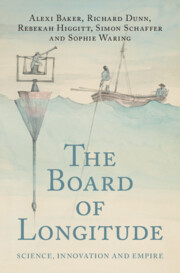Book contents
- The Board of Longitude
- The Board of Longitude
- Copyright page
- Dedication
- Contents
- Figures
- Tables
- Boxes
- Acknowledgements
- Timeline
- Abbreviations
- 1 Introduction
- 2 Sailing the Oceans and Seeking Longitude before 1714
- 3 Launching the Eighteenth-Century Search for Longitude
- 4 The Early Commissioners in Transition
- 5 The Birth of the Board of Longitude
- 6 Time Trials
- 7 Manufacturing the Nautical Almanac
- 8 Managing, Communicating and Judging Longitude after Harrison, 1774–c. 1800
- 9 A Practical Institution Weighed Down by Impractical Proposals?
- 10 What Is an Observatory? From the Metropolis to the Cape
- 11 The Death and Rebirth of the Board of Longitude
- Epilogue
- Book part
- Glossary
- Bibliography
- Index
- References
Bibliography
Published online by Cambridge University Press: 11 April 2025
- The Board of Longitude
- The Board of Longitude
- Copyright page
- Dedication
- Contents
- Figures
- Tables
- Boxes
- Acknowledgements
- Timeline
- Abbreviations
- 1 Introduction
- 2 Sailing the Oceans and Seeking Longitude before 1714
- 3 Launching the Eighteenth-Century Search for Longitude
- 4 The Early Commissioners in Transition
- 5 The Birth of the Board of Longitude
- 6 Time Trials
- 7 Manufacturing the Nautical Almanac
- 8 Managing, Communicating and Judging Longitude after Harrison, 1774–c. 1800
- 9 A Practical Institution Weighed Down by Impractical Proposals?
- 10 What Is an Observatory? From the Metropolis to the Cape
- 11 The Death and Rebirth of the Board of Longitude
- Epilogue
- Book part
- Glossary
- Bibliography
- Index
- References
- Type
- Chapter
- Information
- The Board of LongitudeScience, Innovation and Empire, pp. 307 - 341Publisher: Cambridge University PressPrint publication year: 2025

